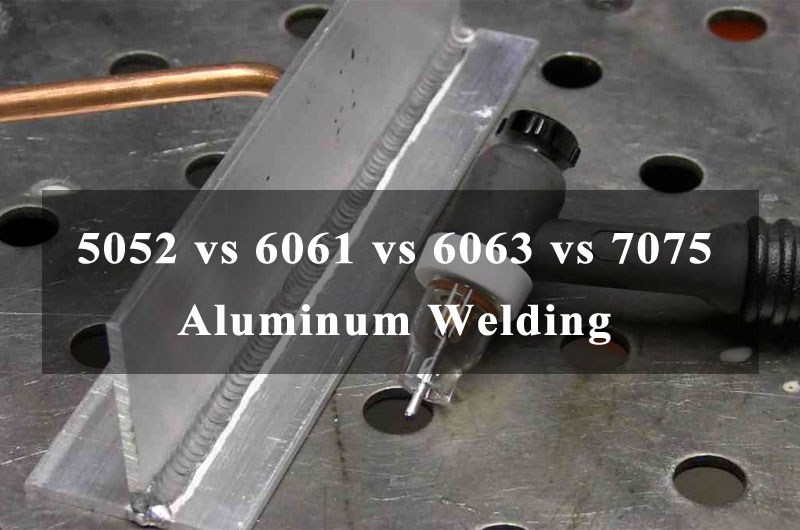Aluminum alloys are prized for their strength-to-weight ratio, corrosion resistance, and versatility across industries such as aerospace, automotive, construction, and marine.
Among the myriad of alloys, 5052, 6061, 6063, and 7075 stand out for their popularity and unique mechanical properties. However, when it comes to metal welding, not all aluminum alloys behave equally.
This article explores the weldability, advantages, challenges, and best practices associated with welding each of these four aluminum alloys.
Introduction to Aluminum Welding
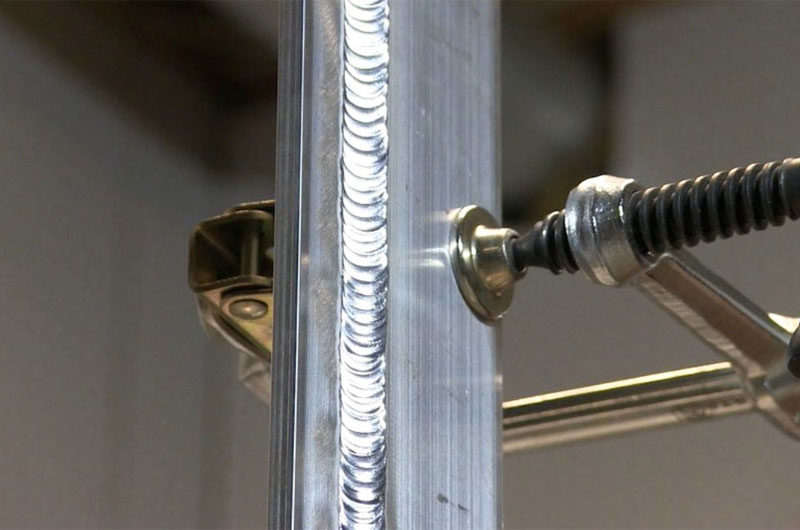
Aluminum welding poses greater difficulties than welding steel because of aluminum’s high thermal conductivity, relatively low melting point, and persistent oxide layer. Factors like alloy composition, heat-treatability, and filler metal selection play crucial roles in determining weldability and post-weld performance.
Overview of the Aluminum Alloys
| Alloy | Series | Type | Key Traits |
|---|---|---|---|
| 5052 | 5xxx | Non-heat-treatable | Excellent corrosion resistance, good weldability |
| 6061 | 6xxx | Heat-treatable | Versatile, strong, widely used |
| 6063 | 6xxx | Heat-treatable | Good formability and surface finish |
| 7075 | 7xxx | Heat-treatable | Very high strength, poor weldability |
1. Welding 5052 Aluminum
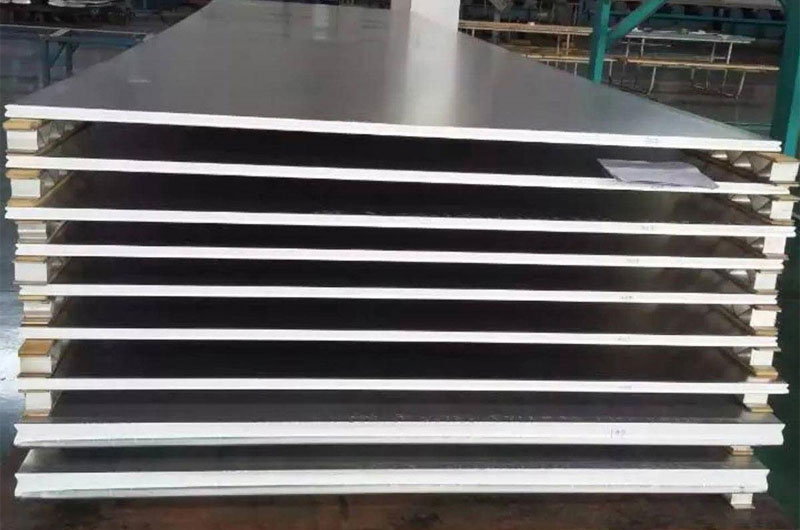
Alloy Characteristics
5052 is a magnesium-based alloy known for its exceptional corrosion resistance, especially in marine environments. It is non-heat-treatable and strain-hardened for strength.
Weldability
Excellent weldability, it’s one of the easiest aluminum alloys to weld, making it a go-to choice for applications involving consistent joint strength and exposure to corrosive elements.
Common Welding Methods
- TIG (GTAW): Provides clean, precise welds.
- MIG (GMAW): Faster and more suitable for thicker sections.
Filler Metal
- ER5356 is commonly used due to its magnesium content, matching the base metal and ensuring corrosion resistance.
Challenges
- Minimal, but care should be taken to avoid overheating as it may reduce strength in the heat-affected zone (HAZ).
Applications
- Marine equipment
- Fuel tanks
- Pressure vessels
- Food processing equipment
2. Welding 6061 Aluminum
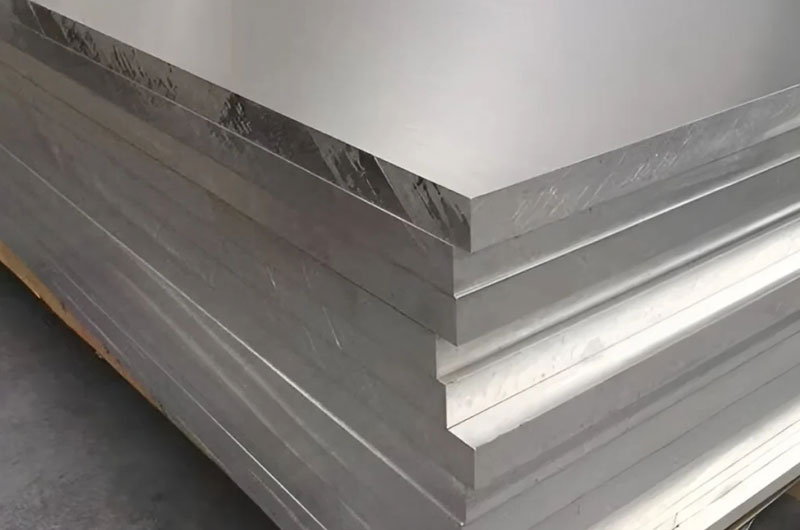
Alloy Characteristics
6061 aluminum, an alloy of magnesium and silicon, provides an excellent combination of strength, corrosion resistance, and machinability. It’s heat-treatable, meaning its strength is enhanced through thermal processing.
Weldability
Good weldability, but weaker post-weld mechanical properties compared to its pre-weld T6 condition due to the loss of heat treatment.
Common Welding Methods
- MIG Welding (GMAW): Common for structural fabrication.
- TIG Welding (GTAW): Preferred for precision or thinner materials.
Filler Metal
- ER4045 and ER5356 are used. ER5356 is more common, offering better strength and crack resistance, while ER4045 is better for reducing hot cracking.
Heat-Affected Zone (HAZ)
The biggest concern when welding 6061 is softening in the HAZ, especially if the alloy is in the T6 condition. Post-weld heat treatment can recover some strength but may not restore it fully.
Best Practices
- Use proper joint preparation to reduce contamination.
- Consider using post-weld heat treatment if strength is critical.
Applications
- Structural components
- Truck frames
- Aerospace parts
- Bicycle frames
3. Welding 6063 Aluminum

Alloy Characteristics
6063 is closely related to 6061 but is more focused on surface finish and formability than strength. It is widely used in architectural applications and is also heat-treatable.
Weldability
Very good weldability, slightly better than 6061 due to lower alloying content which reduces cracking tendencies.
Common Welding Methods
- TIG Welding (GTAW): Excellent for clean, aesthetic welds.
- MIG Welding (GMAW): Suitable for structural applications.
Filler Metal
- ER4045 and ER5356 are both suitable. Use ER4045 for improved cosmetic appearance and flow characteristics.
HAZ Consideration
Like 6061, the T6 temper will lose strength in the HAZ. However, since 6063 is not typically used in high-stress applications, this is less critical.
Applications
- Window frames
- Doors
- Railings
- Architectural tubing
4. Welding 7075 Aluminum
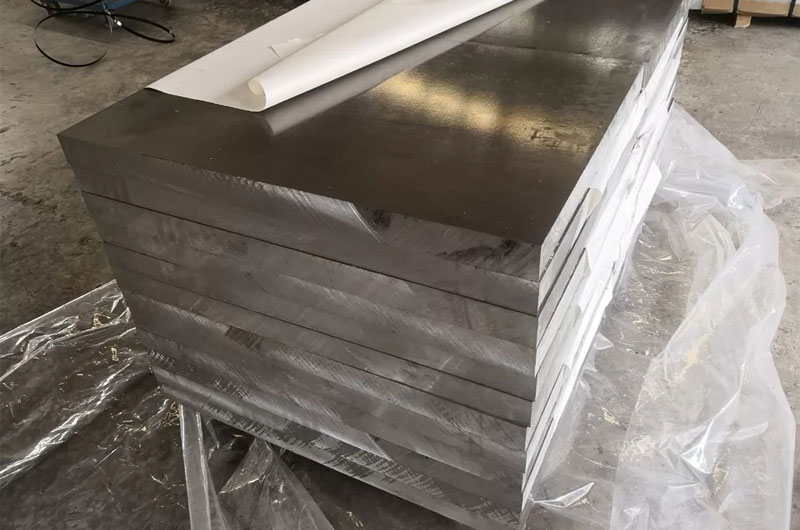
Alloy Characteristics
7075 is an aluminum-zinc alloy, famous for its very high strength, often used in aerospace and defense. It is heat-treatable but not considered weldable by conventional standards.
Weldability
Poor weldability. 7075 is susceptible to hot cracking, porosity, and loss of strength in the weld zone.
Why It’s Difficult to Weld
- High zinc content increases the risk of solidification cracking.
- The HAZ becomes extremely weak due to rapid loss of mechanical properties.
- Prone to stress corrosion cracking (SCC) after welding.
Common Welding Approaches
- Friction Stir Welding (FSW): A solid-state method that avoids melting, reducing the risks associated with welding 7075.
- Resistance Welding or Electron Beam Welding: Sometimes used in specialized applications.
Filler Metal
If conventional welding is attempted (rare), ER5356 may be used, but only in low-stress applications.
Alternatives
Instead of welding:
- Use mechanical fastening (rivets, bolts).
- Consider redesigning the part using weldable alloys for joints.
Applications
- Aircraft structures
- Aerospace parts
- Sporting goods (bike frames, climbing gear)
Comparative Table of Weldability
| Alloy | Weldability | Filler Metal | Heat-Treatable | Post-Weld Strength Loss | Comments |
|---|---|---|---|---|---|
| 5052 | Excellent | ER5356 | No | Minimal | Very weld-friendly |
| 6061 | Good | ER4045 / ER5356 | Yes | Moderate | Common, strong alloy |
| 6063 | Very Good | ER4045 / ER5356 | Yes | Moderate | Great for cosmetic welds |
| 7075 | Poor | ER5356 (rare) | Yes | Severe | Avoid welding when possible |
Key Welding Considerations
1. Filler Metal Compatibility
Selecting a filler metal that matches or complements the base alloy’s composition is crucial for minimizing hot cracking and maximizing corrosion resistance.
2. Pre-Weld Preparation
Cleanliness is vital. Aluminum oxide melts at a much higher temperature (~3700°F) than aluminum itself (~1200°F). Removing oxides prevents contamination and improves weld quality.
3. Heat-Affected Zone (HAZ)
Heat-treatable alloys like 6061, 6063, and 7075 lose strength in the HAZ due to disruption of their temper. Non-heat-treatable 5052 performs better in this regard.
4. Welding Techniques
- Use TIG for precision and appearance.
- Use MIG for speed and thicker materials.
- Friction Stir Welding is best for 7075 and similar difficult-to-weld alloys.
5. Post-Weld Heat Treatment
Heat-treatable alloys may require aging or solution treatment after welding to regain mechanical strength.
Application-Based Welding Alloy Choice
| Industry | Recommended Alloy | Rationale |
|---|---|---|
| Marine | 5052 | Excellent corrosion resistance and weldability |
| Construction | 6063 | Good finish, easy to weld, moderate strength |
| General Fabrication | 6061 | Balanced strength and weldability |
| Aerospace | 7075 (avoid welding) | Use mechanical fastening or FSW |
Final Thoughts
When welding aluminum, alloy selection significantly influences ease of fabrication, joint integrity, and service life. Among the four alloys:
- 5052 aluminum is the easiest and safest to weld.
- 6061 aluminum is a balanced choice with post-weld temper management.
- 6063 aluminum provides great aesthetics and formability with good weld results.
- 7075 aluminum is not recommended for welding unless using advanced techniques like FSW.
Choosing the right alloy depends on your application’s performance requirements, exposure conditions, and production capabilities. Understanding the metallurgical behavior of each aluminum grade ensures high-quality, long-lasting welds in your designs and assemblies.

